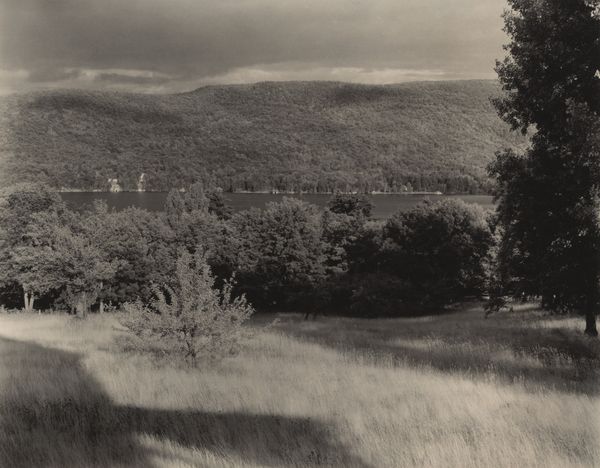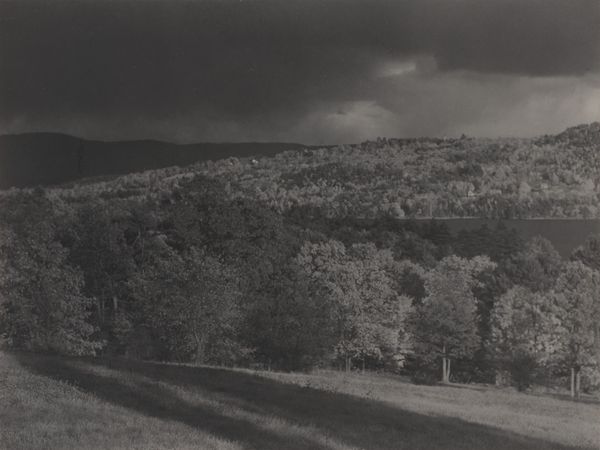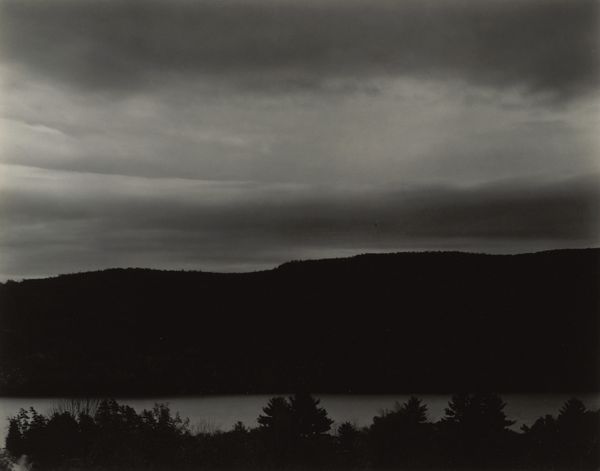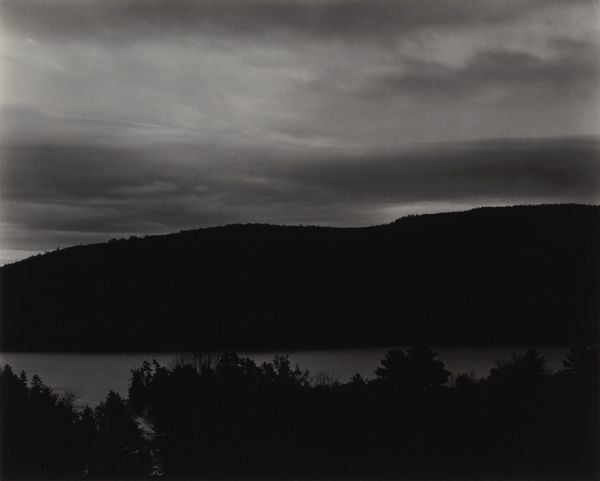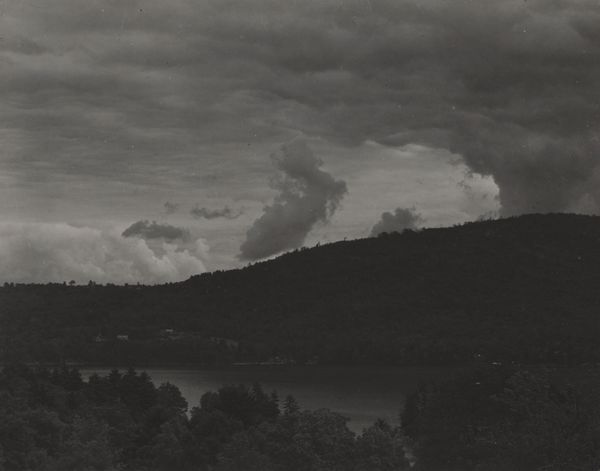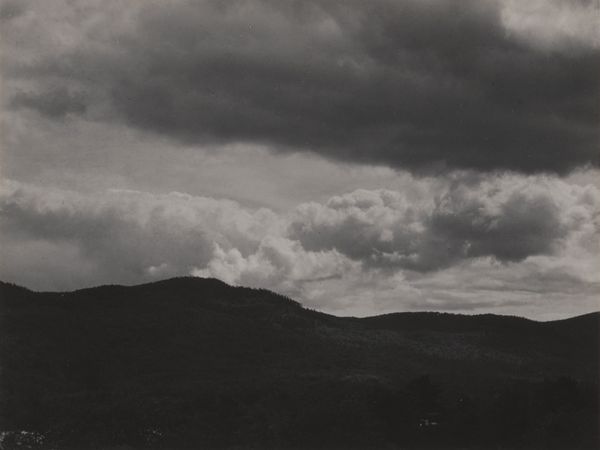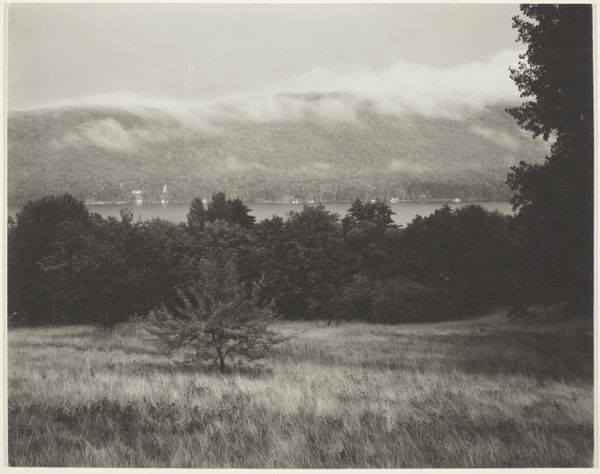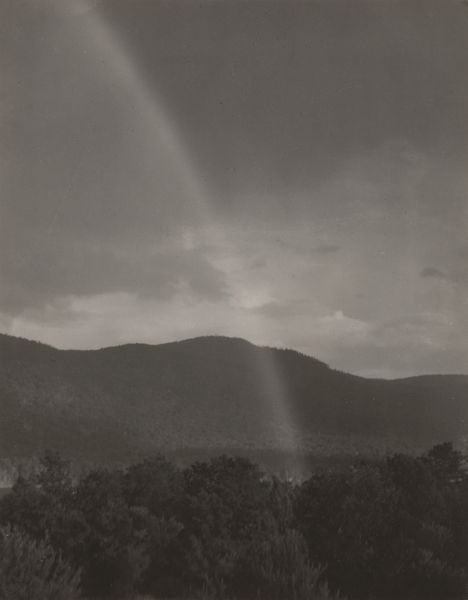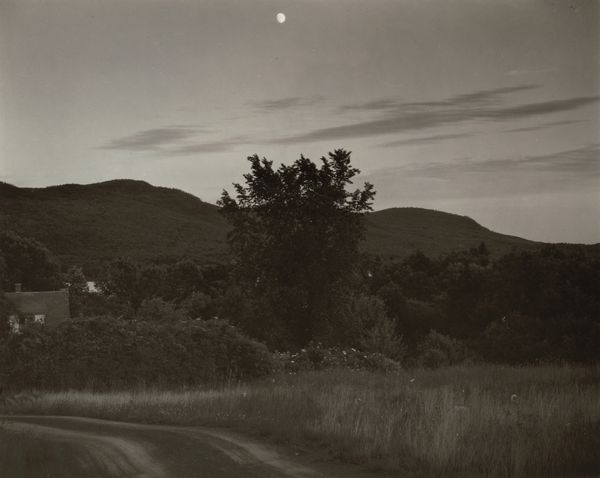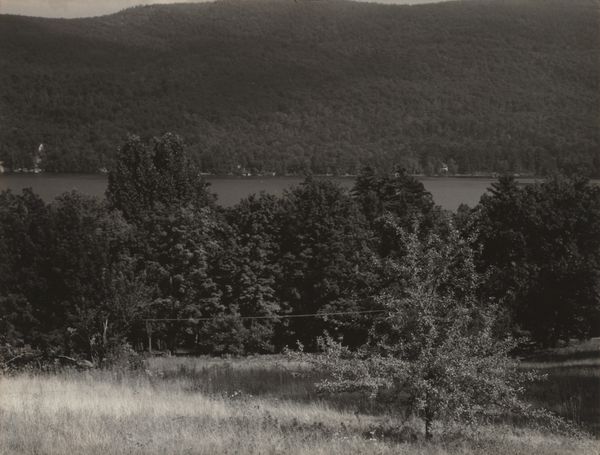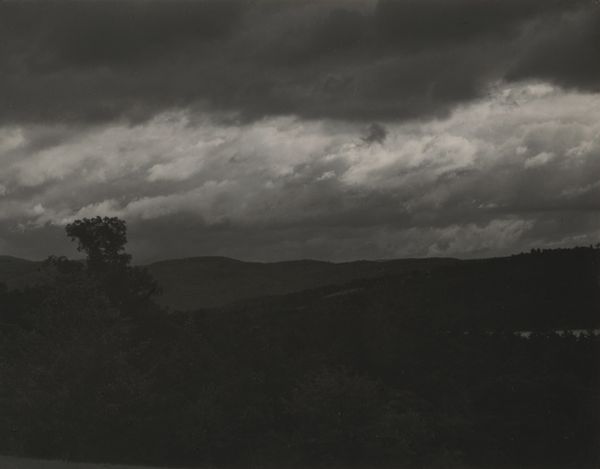
photography, gelatin-silver-print
#
black and white photography
#
pictorialism
#
landscape
#
photography
#
gelatin-silver-print
#
monochrome photography
#
modernism
#
realism
#
monochrome
Dimensions: sheet (trimmed to image): 18.7 x 23.8 cm (7 3/8 x 9 3/8 in.) mount: 54.9 x 42.2 cm (21 5/8 x 16 5/8 in.)
Copyright: National Gallery of Art: CC0 1.0
Editor: This is "Lake George from the Hill", a gelatin-silver print by Alfred Stieglitz from 1932. There’s such a stark contrast between light and shadow, it gives a dramatic feel. What do you see in this photograph? Curator: Its composition is certainly striking. Note how Stieglitz divides the pictorial space. The photograph relies on tonal arrangements. Observe the foreground’s dense thicket leading the eye to the contrasted luminosity beyond. Then your gaze rises up along the distant, subtle hill. How does that upward movement feel to you? Editor: It feels, I guess, kind of hopeful? Like you’re moving towards the light. Is that what he was going for? Curator: Stieglitz, like many modernist photographers, focused on achieving pure, unmanipulated photographic prints. Look at the different textures – the soft focus in the grass, contrasted with the sharper, almost geometric shapes of the trees and the subtle gradient in the sky. Consider how each of those visual components contributes to the overall form. Is it narrative, or more focused on shapes and tones? Editor: I see what you mean. It's less about a story and more about how the shapes and tones work together. So it's about how he used the qualities specific to photography to create something beautiful. It’s interesting how focusing on the composition reveals new aspects that you might miss focusing on context alone. Curator: Exactly. That interplay between elements – shadow, light, texture, and form – culminates in the image's profound visual statement. Considering just this photograph's formal and material elements lets me see its impact in a fresh way.
Comments
No comments
Be the first to comment and join the conversation on the ultimate creative platform.
